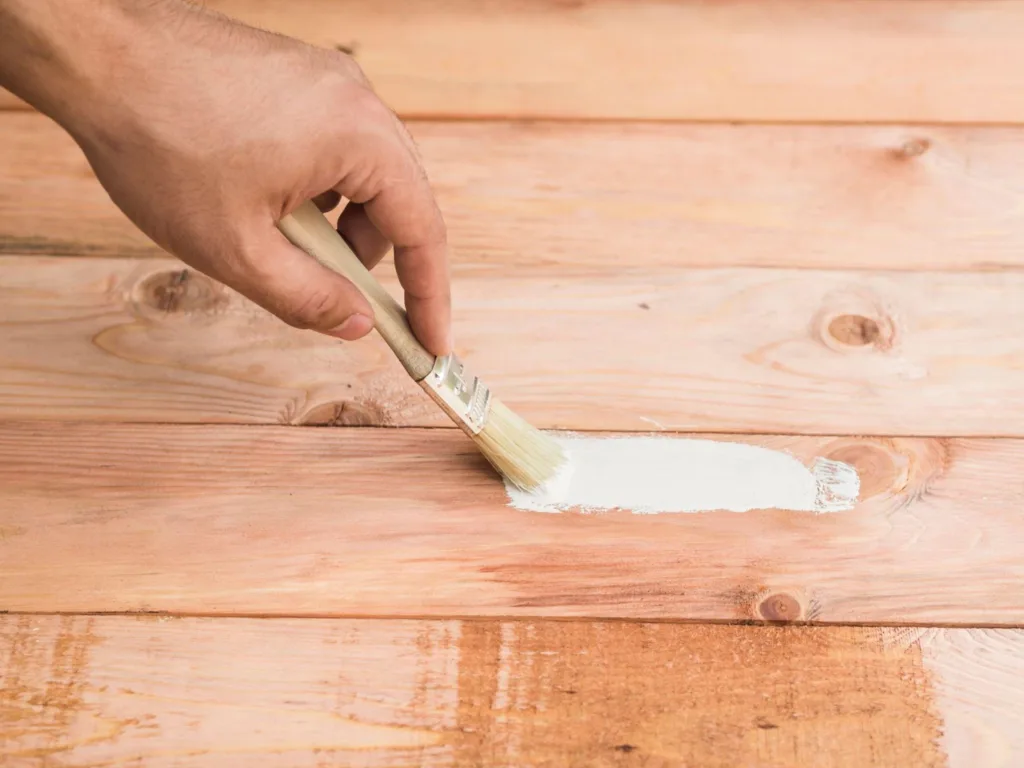
Just imagine you’ve got a woodworking project in mind, and you’re ready to add that perfect coat of paint to bring it to life. But hold on a minute! Before you start painting, it’s important to apply a primer. Let’s take a closer look at the different types of wood primers and when to use them to ensure your project looks its best.
What is Wood Primer, and Why is it Necessary?
Wood primer is a coating applied to bare wood before painting. It helps improve the overall quality and longevity of the finished interior primer paint.
1. Sealing and Smoothing:
Primer helps seal the pores of the wood and fills in any imperfections or rough spots, creating a smooth and uniform surface for the paint to adhere to.
2. Enhancing Adhesion:
Primers promote better adhesion between the wood and the paint, helping prevent peeling, cracking, and flaking over time and ensuring a durable and long-lasting finish.
3. Blocking Stains and Tannins:
Some wood primers contain ingredients that block stains, knots, and tannins from bleeding through the paint, resulting in a clean and uniform appearance.
Types of Wood Primers and Their Uses
Now, let’s explore the different types of wood primers available and when to use them for optimal results:
1. Oil-Based Wood Primer:
Oil-based wood primers are ideal for sealing and priming bare wood surfaces, especially those prone to staining or containing high levels of tannins, such as cedar or redwood.
Benefits:
They provide excellent adhesion and stain-blocking properties, making them suitable for use on exterior woodwork and areas subject to moisture or humidity.
2. Water-Based Wood Primer:
Water-based wood primers are versatile and suitable for both interior and exterior wood surfaces.
Benefits:
They dry quickly, have low odour, and are easy to clean up with soap and water, making them an excellent choice for indoor projects where ventilation may be limited.
3. Shellac-Based Wood Primer:
Shellac-based primers are highly effective at blocking stains, odours, and wood knots, making them ideal for use on problem surfaces such as smoke-damaged wood or furniture.
Benefits:
They dry quickly, adhere well to various surfaces, and provide a strong barrier against moisture and stains.
When to Use Each Type of Wood Primer
Oil-Based Wood Primer:
Use oil-based primer when working with exterior wood surfaces exposed to moisture or tannin-rich woods prone to staining, such as cedar or redwood.
Water-Based Wood Primer:
Choose a water-based primer for interior wood projects such as trim, cabinets, or furniture where quick drying time and easy cleanup are desired.
Shellac-Based Wood Primer:
Choose shellac-based primer when dealing with problem surfaces like smoke-damaged wood or furniture, as it effectively seals in stains and odours.
Conclusion
Selecting the right wood primer is essential for achieving a professional-looking finish and ensuring the longevity of your paint job. Whether you’re working on an interior or exterior project, choosing the appropriate primer based on the type of wood and surface conditions will help you achieve optimal results with your wooden colour paint. So, before you start painting, don’t forget to prime—it’s a step that can make all the difference in the outcome of your woodworking masterpiece.








Leave a Comment
You must be logged in to post a comment.